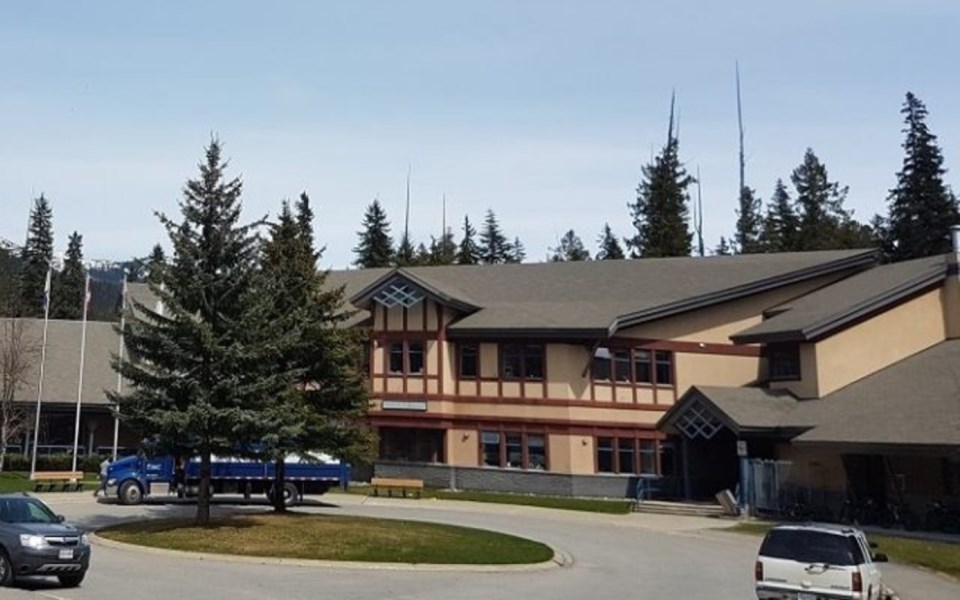School District 48 (SD48) has formalized a policy intended to protect students, staff and parents from discrimination based on their sexual orientation, gender identity or expression (SOGI).
"A responsive, safe, and inclusive school environment is necessary for students to learn and achieve high academic standards. Discrimination is not part of such an environment," the policy reads. "All members of the school community are expected to model respectful conduct regardless of perceived differences and should refuse to tolerate any form of discrimination due to an individual's actual or perceived LGBTTQ+ status or identity."
Director of learning services for the district, Phillip Clarke, said the policy is an extension of SD48's previous position.
"We already had a policy, so this is not really a departure from it; it's just a modernization of a current policy," he said.
The policy, which was unanimously approved at an Aug. 29 school board meeting first reported on by The Squamish Chief, is "more explicit in its language" than the previous one, Clarke said.
As part of the update, the district will ensure students are identified by their preferred pronoun. It will also "strive to make available at least one single stall gender-neutral washroom" at all schools and worksites, and ensure students whose gender identity differs from their sex at birth have access to a washroom or change room that is either gender-neutral or corresponds with their gender identity.
The district will also ensure, where possible, that students be permitted to participate in any gender-segregated recreational and competitive athletic activities according to their gender identity.
SD48 worked with B.C.'s Ministry of Education to develop the policy in accordance with the B.C. Human Rights Code. Although similar policies have attracted some backlash in B.C. and elsewhere, Clarke said the school board is confident in the policy's mandate.
"Our board feels very strongly and our staff feels very good about this policy and I think what we're most excited about is creating those environments where all of our (students) can be successful," he said.
The policy also promotes effective procedures to respond to discrimination, harassment and exclusion, and commits to providing resources for LGBTTQ+ students and staff. Clarke said each school in the district would have a designated support person, or "SOGI lead."
"We will continue to provide programming and professional development for our adults and (students) in the building to ensure that all students, adults and pretty much anyone who enters our schools can come in free of any discrimination," he said. "They have the right to work and to learn in our school environment."
Teachers will be encouraged to include age-appropriate LGBTTQ+ issues into the curriculum that meet the education ministry's standards to "help students acquire the skills and knowledge to understand the impacts of homophobia and transphobia upon society," according to the policy.
As of late 2016, all school districts and private schools in B.C. were required to include references to sexual orientation and gender identities in their anti-bullying policies.
In a November 2017 report, the Ministry of Education reported that lesbian, gay and bisexual youth were seven times more likely to attempt suicide than heterosexual youth in the previous 12 months. The same report said about 19 per cent of high school students in B.C. identify as gay, lesbian, bisexual or not exclusively heterosexual. About one per cent of B.C. high school students identify as transgender, and five per cent of Indigenous students identify as two-spirit.
SD48 French enrolment more than double provincial average last year
One-fifth of all students in School District 48 were enrolled in French immersion last year, more than double the provincial average, according to a report released this week.
For the 2017-18 academic year, 1,031 students in the district were enrolled in French immersion, representing 20.6 per cent of the student body. That's compared to 53,487 students province-wide, or 9.5 per cent of all B.C. students.
"I know the program in Squamish is growing by leaps and bounds," explained Glyn Lewis, executive director of Canadian Parents for French for B.C. and Yukon, which released the report. "Squamish, as a community in general, is growing and I think a lot of families moving into (the) community are looking to register their kids in French immersion—that's pushing a lot of this demand."
Given the demand, Lewis said he was disappointed last year when SD48 announced it would be ending the late-entry French immersion program, which starts in Grade 5, at all Squamish schools. It was replaced with an early French immersion program for students heading into Kindergarten or Grade 1.
The district has struggled, like much of the province, to recruit qualified French teachers. The situation got so dire that the B.C. government committed, in April, to bilateral agreements with France and the Netherlands that promote French-language teachers and student exchanges.
The province has also worked to increase domestic teacher hires with the creation of 37 additional spaces in French teacher-education programs at the University of British Columbia and Simon Fraser University over the next two years.
The problem is, according to Lewis, that doesn't help this year's teacher shortage; he estimated there are between 100 and 150 French teacher positions unfilled heading into the school year.
"The long and skinny of it is that we fell behind the eight ball on this whole thing," he noted. "Last year, with the change in class composition, things completely blew up—plus there was a new government—and it was only then that we started to finally see some engagement and initiative."




